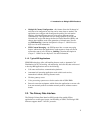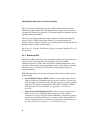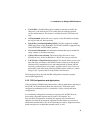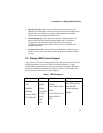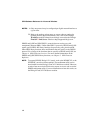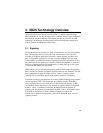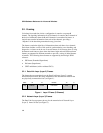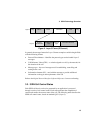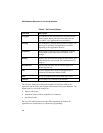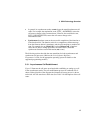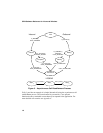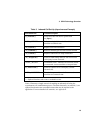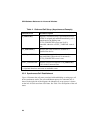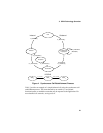
ISDN Software Reference for Linux and Windows
14
3.2. Framing
Voice data from each time slot in a configuration is routed to a separate B
channel. The signaling information for all B channels is routed to the D channel of
the device. Information from the B and D channels is transmitted in frames. A
single frame contains information from each of the channels, providing a
“snapshot” of the data being transmitted at any given time.
The frames contain the eight bits of information about each time slot or channel.
Each frame includes a series of bits used for synchronization, error checking, and
diagnostics. A frame can be in one of several formats. In all formats, there is a flag
bit between each frame to show where the frames begin and end. Different frame
formats are supported in different networks to provide a variety of added features
or benefits. The following frame formats are supported by the Dialogic ISDN
software:
• ESF frame (Extended Superframe)
• D4 frame (Superframe)
• CEPT multiframe (with or without CRC4)
3.2.1. Data Link Layer (Layer 2) Frames
The frames that are transmitted over the Data Link Layer (Layer 2) contain
information that controls the setup, maintenance and disconnection between the
two physically connected devices (see Figure 1).
Flag Information Flag
Address FCSControl
8 bits 16
16
16
8Variable
Figure 1. Layer 2 Frame (D Channel)
3.2.2. Network Layer (Layer 3) Frames
The Data Link Layer prepares the way for the transmission of Network Layer
(Layer 3) frames of data (see Figure 2).




